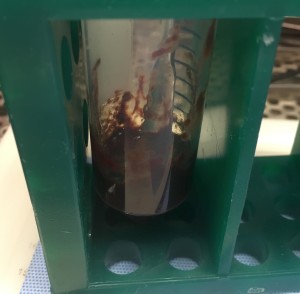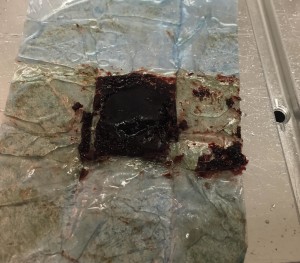I was always looking at learning how to do new techniques and operate new machinery while I was working at Caris Lifesciences. The projects that take you out of the repetitive daily tasks were what I lived for. Cytology was a great skill to learn.
I was approached about how I would feel about learning how to process fluid specimens during grossing, or cytology. Since this was something new, I wanted to see how it went. We were going to receive all types of bodily fluids, most of them containing blood, but not necessarily always.
The process wasn’t super complicated, but there were a lot more manual steps involved than simply putting tissue in a tissue processor.
It involved pipetting the blood into smaller vials. These vials were then placed in a centrifuge, spun down, and had the supernatant pipetted off the top, and then spun down more to form a pellet.

The idea was to get as much of the fluid out as possible. This process continued until a satisfactory pellet was made.
The pellets were then combined and heated agarose gel was added to the cell pellet. The agarose infused cells were then wrapped in lens paper and stuck in the tissue processor to further desiccate the sample. After tissue processing, it was embedded in paraffin and cut on a microtome like any other sample.

With all the steps, these samples could take anywhere from 45 minutes to a few hours depending on the quality of the fluid being sent in. If it wasn’t fresh, it was hard, and if it had formalin in it, more centrifuging was required.
I was the only person, besides the lab director, who was responsible for doing these samples. It was a responsibility I gladly accepted, plus if one of these cytology samples came in on a weekend (which I volunteered to work), I would have to process them anyway. I did so with little supervision or training, but just followed the assay and everything came out well each time. Most of the specimens I handled yielded good molecular data later down the process line.
